VELO-CITY GLOBAL TAIPEI 2016 - DAY 04
01st of March
Design in Motion: How Design Evolves to Match the Latest Technologies

In this very interesting session the focus was on how bikes can continue to grow and reclaim the roads from cars. To start, Monica Kuo, from the Chinese Culture University, explored how bicycles were making a comeback in Taiwan, with a particular focus on the Greenway infrastructure system. For years, bicycles were the main form of transport, but had lost out to motorbikes and scooters. However, the new network has helped re-establish the comeback. This is a large, multi-departmental collaboration, also involving private sector entities, and has now completed 4486km of bike lanes, covering the island. To take the next step, the network needs to target daily transportation and commuting, which is where the design is now focused.
Following Mrs Kuo, Joshua Hon spoke about Tern’s folding bikes, and how they are helping achieve their mission: to get people cycling more, and driving less. One of the problems Asia faces is excessive traffic, and the pollution that results from this. Joshua pointed out one of the major advantages of folding bikes, as they help extend the range of public transport. Integrating cycling into the design of public transport means that you require fewer nodes, and can save money. Designing sustainable cities in partnership with Public Transport is important, as it ensure that cities are designed coherently, and utilise all available sustainable transport modes in the most effective way possible. This has been seen in Germany, where Tern has been promoting cycling to train stations on their folding bikes.
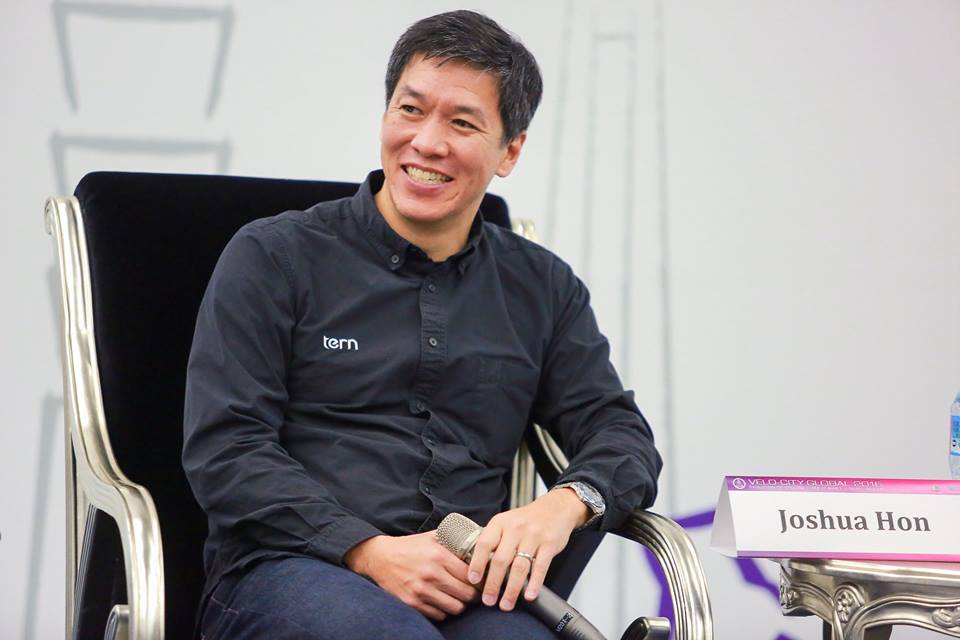
Finally, Claus Fleischer, from Bosch eBike Systems, the latest member of ECF’s Cycling Industry Club, spoke about designing bikes in the future. He argued that the future of mobility will be electrified, automated and connected, and that bikes, and in particular eBikes, will play a major role in this changing landscape. Despite the bicycle being 200 years old, even it needs an evolution and motors could be this evolution. They provide more range, and eBikes can combine the benefits of cycling with the increased range of motorised transport. One important trend is that previously, eBikes were used mostly by elderly people, but now there is a younger market for them, and they are prompting people to ride 2-3x as much, as they remove many of the barriers to cycling.
Regarding the future of design, Fleischer thought that it will be dependent upon technology – the drive motor and the battery will determine how bikes can be designed, and of course the challenge would be to make them smaller but no less effective. Regarding technology, he argued that in the future, automation and connectivity will provide technology to power gears, to have GPS bike tracking in case of theft, and there will be more and more use of connectivity, such as road side infrastructure and public bike share systems, with many different partners.
Velo-city Taipei is Over. But it Leaves Us a Huge Legacy
Closing Plenary
After four days of sessions and events bringing together the top spokespersons from all the relevant fields related to cycling, Velo-city Taipei is finally over. But the atmosphere at the Closing Plenary was charged with excitement: this is not the end of a conference, but the beginning of a new period. Industries, advocates, public authorities have all received enough inspiring ideas and motivation to renew their efforts in promoting cycling.
Michael Cramer, a Member of the European Parliament active in supporting cycling policies, clearly stated that
Without a change in mobility, we can never stop climate change
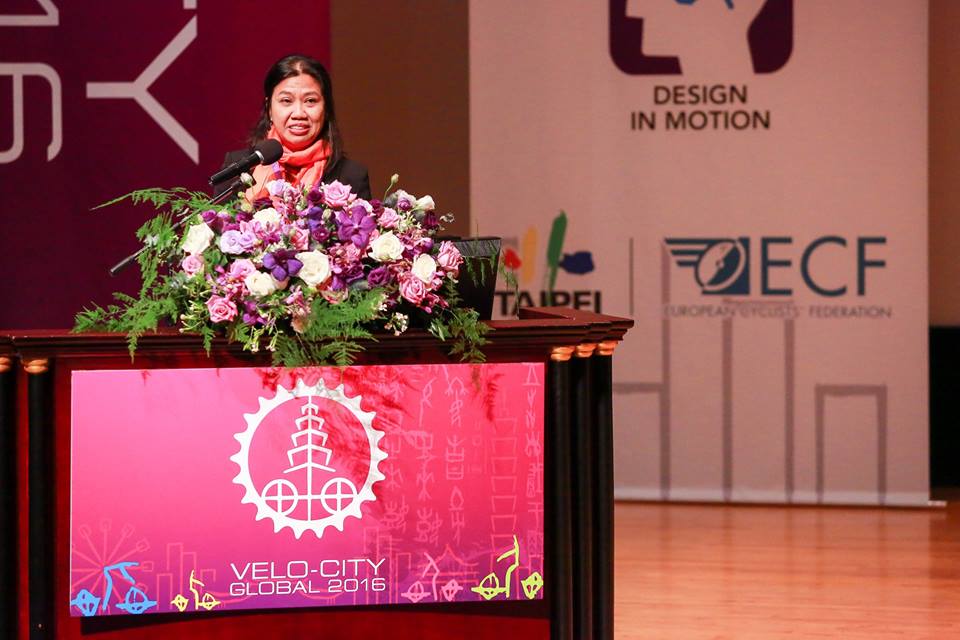 As we know, cycling delivers greatly on Global Goals, climate change included. Transport is responsible for 24% of CO2 emissions. Since 1990 there has been a decrease in emissions from industry, housing, energy sector but in the transport sector there is an increase of 22%. On the other hand, only 0,7% of EU funding for transport is dedicated to cycling: “The voice of the bicycle industry needs to be unified and strong, in order for a real shift to follow. The EU needs an action plan on cycling: we have to show the rest of the world that mobility without cars is possible” concluded Mikael.
As we know, cycling delivers greatly on Global Goals, climate change included. Transport is responsible for 24% of CO2 emissions. Since 1990 there has been a decrease in emissions from industry, housing, energy sector but in the transport sector there is an increase of 22%. On the other hand, only 0,7% of EU funding for transport is dedicated to cycling: “The voice of the bicycle industry needs to be unified and strong, in order for a real shift to follow. The EU needs an action plan on cycling: we have to show the rest of the world that mobility without cars is possible” concluded Mikael.
But the challenges that climate change presents to the cycling world are many and very diverse. Bernadia Irawati Tjandradewi, Secretary General of United Cities and Local Governments of the Asia-Pacific (UCLG ASPAC), talked about the ones she witnesses on the other side of the planet.
The Asian population is growing extremely fast, but shared mobility fails to keep the pace. This is where the cycling sector has to focus right now: “Non-motorised transport is a key issue to address Sustainable Development Goals: we need to make cities inclusive, safe and sustainable” said Bernadia, also reminding that “A new urban agenda will be decided in Quito, during the UN-Habitat conference: it will be a great opportunity to show the importance of including bicycles in these processes”.
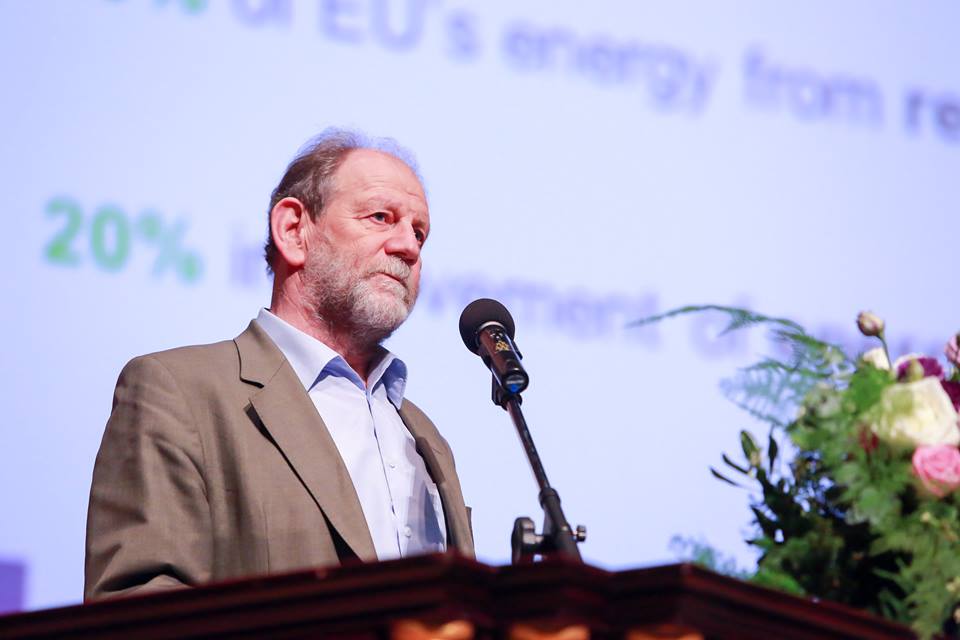
Challenges for developing countries are great: not only poor infrastructures and difficult economic conditions to develop better ones; but also bad air quality, adverse climate (humidity, temperatures), cultural barriers.
“The answer is in cooperation: we need sharing societies, where best practices are exchanged between cities and public authorities, where infrastructural and institutional networks connect local realities. The future of development must be people-centred”.
Matthias van Wijnendale, Mobility Advisor in Brussels, concluded by bringing evidence of the work done at the local level: “Brussels wants to be a cycle city by 2020. There are three steps to take to get there: infrastructure, infrastructure and infrastructure”. Above all, continued Matthias, space should be taken away from cars and given to cyclists with secured cycle paths. And he concluded:
Mobility is not a goal on itself, the final goal is quality of city life
When a door closes... Taipei is Over, the Dutch Arnhem-Nijmegen are waiting
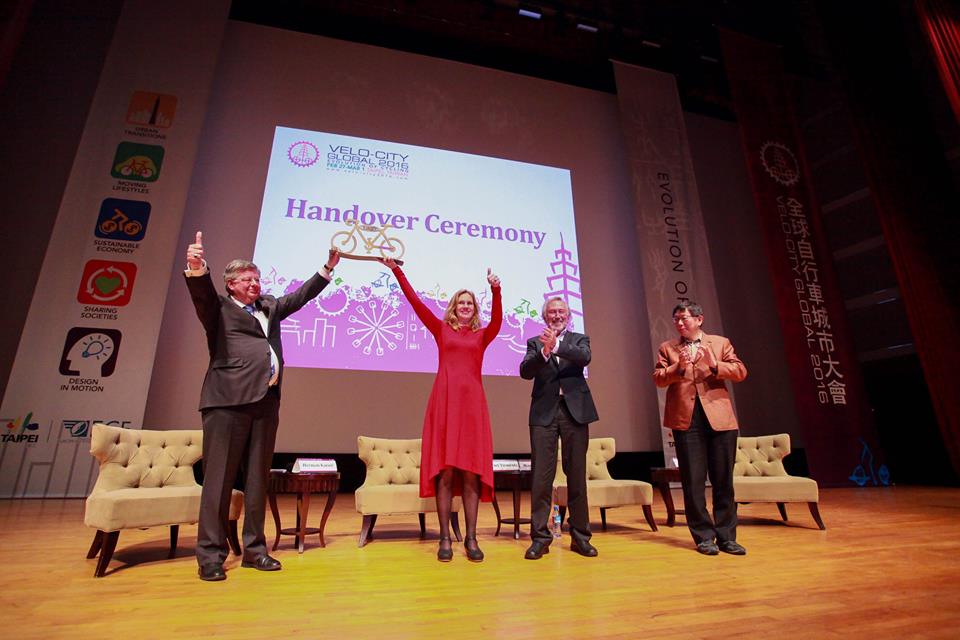
Handover Ceremony
The gears of the cycling world are moving, and it will be impossible to stop them, at this point. Velo-city Taipei has finally reached its conclusion, but next year's edition has already begun to move. Manfred Neun, president of ECF and WCA, celebrated the Handover Ceremony, passing the baton to Velo-city 2017 host cities: Arnhem and Nijmegen, in the Netherlands!
"Industry came in strong this year at Velo-city" declared Manfred "And will join the advocacy efforts for the promotion of daily cycling. Governments have shown they put people at the very centre of their development plans. We would like to thank the city of Taipei for being an example in these topics and for making Velo-city 2016 a success!" Wen-je Ko, Mayor of Taipei, was present to receive these words, after doing what every good politician should: leading by example. He is a passionate cyclist, and rode throughout the whole Island of Taiwan to promote the Velo-city conference: 380km in 20 hours! He's speech was an inspiring one:
Cycling symbolizes an urban lifestyle of culture, slow living and sustainability. It brings changes to urban life, boosting economic development, citizen’s health and the awareness of environmental issues
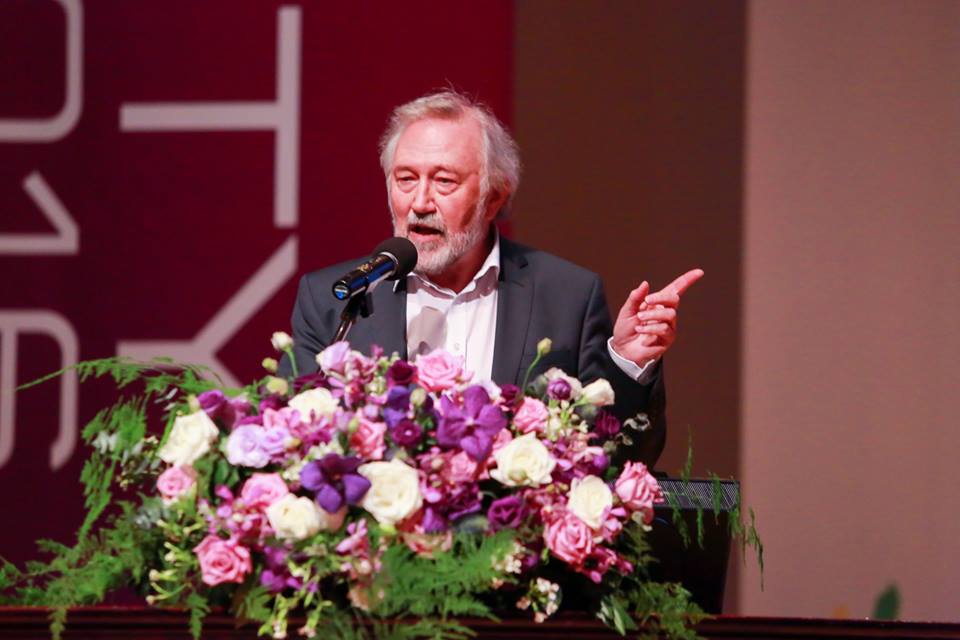 At the end of the ceremony, the Velo-city emblem was handed from Taipei to Arnhem-Nijmegen in the Netherlands.
At the end of the ceremony, the Velo-city emblem was handed from Taipei to Arnhem-Nijmegen in the Netherlands.
“We are very impressed by what we have seen and experienced here in Taipei. You are bridging the gap between technology and human scale. Bridges are a metaphor for collaboration and freedom, like our two cities prosper by working together. Our theme will be about the Freedom of Cycling: the freedom to live in an inclusive society”, said Herman Kaiser, Mayor of Arnhem.
Nijmegen’s Vice Mayor Harriet Tiemens added: “Our cities Arnhem-Nijmegen are very honoured to be hosting the next Velo-city conference 2017 on behalf of the Netherlands”.
Security is Crucial for Cyclists: When Advocacy and Technology Meet
Well-Being and Security on a Bike
Several polls and studies have already extensively proven that safety is one of the major concerns of new cyclists approaching bicycles for their everyday commutes. In Thailand, there were 538 fatalities last year and much of the problem seems to be drunk driving and riding. Considered the terrible road safety record in his country, Gawin Chutima from Thailand Cycling Club (TCC) spoke about their advocacy activities aimed at safer roads in Thailand.
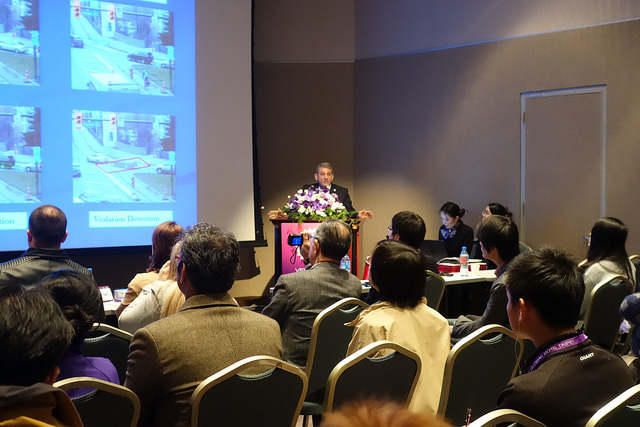 With Thailand being second worst in the world, TCC's lobbying actions have included working with the National Health Assembly to produce a resolution on cycling and walking and for the Public Authorities to promise action. Their efforts have led to concrete successes: the Land Transport Department now include walking and cycling in driver training and licensing; the Education Ministry include cycling and walking education into schools, and the Transport Ministry have begun introducing infrastructure standards and have reduced urban speed limits from 80kph to 50kph. This has involved lots of lobby activity and meeting with politicians, legal experts and also the Prime Minister.
With Thailand being second worst in the world, TCC's lobbying actions have included working with the National Health Assembly to produce a resolution on cycling and walking and for the Public Authorities to promise action. Their efforts have led to concrete successes: the Land Transport Department now include walking and cycling in driver training and licensing; the Education Ministry include cycling and walking education into schools, and the Transport Ministry have begun introducing infrastructure standards and have reduced urban speed limits from 80kph to 50kph. This has involved lots of lobby activity and meeting with politicians, legal experts and also the Prime Minister.
But technology is one of the fields that might actually really help improving the safety situation. Irene McAleese from see.sense presented her product: a bicycle light that contains many hi tech sensors within it. This means that the light can adjust to situations on the road, becoming brighter and flashing in hot spots like junctions, at high speeds or during dangerous manoeuvres. The light can also send a message to next of kin when there is an accident situation. The sensors can also detect air quality which will be useful information for public authorities, as will the sensing of road surfaces.
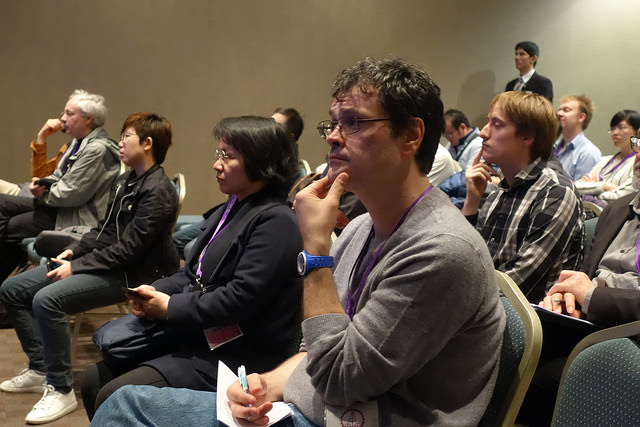
Another interesting piece of technology is the camera developed by Tatsuro Suzuki from Kokasai Kogyu. This camera that can be fitted to a bike and provide a 360 degree picture of the road which can then be used to spot dangerous zones. It interacts in a similar way to Google maps street view and can be annotated and noted. The pictures are also publicly available and tourism will be able to take advantage of it: visitors can use it to check routes for dangerous stretches or roads, but also to find place of note to visit.
Tarek Sayed from the University of British Columbia has been working on another outstanding project: his camera system that is able to detect and track the movement of different road users. It is able to differentiate between the different road users, as well as their trajectory and to note risky movements or behaviours. The system can also separate cyclists and walkers into age, gender, types of bike and helmet use. The system is useful for analysing dangerous junctions and sections of the road, as well as for tracking risky behaviour amongst and within different road user groups. For example, he found that helmeted cyclists rode quicker than non-helmeted cyclists, even after controlling for bike type.
The Design Exhibition Prize Presented the Bicycles of the Future
Design Exhibition Prize Winner Presentation
The Taipei Cycle Show is a world recognised venue for new designs in cycling, hosting both the Taipei Cycle Show Design and Innovation Awards for the industry and the International Bicycle Design Competition for more futuristic design ideas. Both will be presenting prizes on March 2nd at the Show.
Velo-city Taipei recognised the work of the show with a Design Awards session at Velo-city, reminding the audience about the most important elements in bicycle design.
For Brian Hoel, director of Protanium BV & DIAVELO it is simplicity and for Jansen Tan it is the evolution in the eBike sector.
Han Goes from Q Square Consultants reviewed some of the most iconic bicycles of the past, ranging from Gazelle’s upright Dutch model that is so old but still fashionable, the triangle folding bike, the Gazelle cargobike with foldable cargo panier all the way to the famous bike share design Velib’ that has conquered the world. “Imagination is key in the biggest bicycle competition for young professionals in the world” according to Han Goes.
Mark Sanders, director of MAS Design Products, says the industry is mainly focused on the 20% of the population that is already into cycling, mostly sports cycling, where the industry players practically kill each other like sharks (a so called “Red Ocean Strategy”). He advises the industry to take a dive in the “Blue Ocean” and target the 80% of the population that has not taken up cycling yet and adapt products to them, keeping it simple, clean and also fun.
ECF was also honoured to be deeply involved in the search for this year’s Taipei Cycle Show Design and Innovation Awards. ECF’s Development Director Kevin Mayne was on the judging panel for the awards which will be announced tomorrow.
